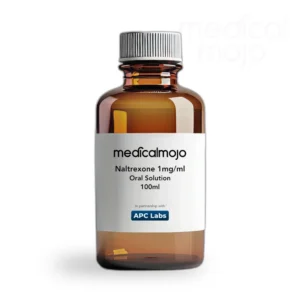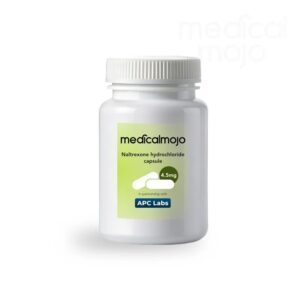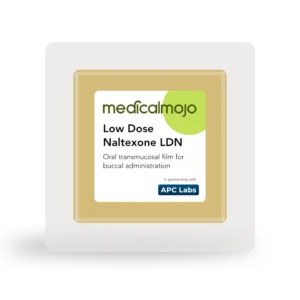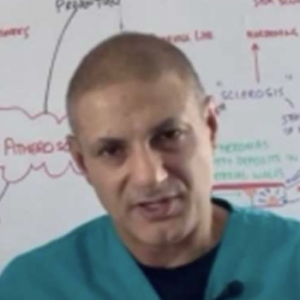Low Dose Naltrexone (LDN) has gained considerable attention in recent years for its off-label use in treating various conditions, including autoimmune disorders, chronic regional pain syndrome and fibromyalgia. But the problem many people face is where to buy Low Dose Naltrexone in the UK.
More and more people are learning about the benefits of an anti-inflammatory drug that has demonstrated its efficacy in treating seemingly intractable conditions, such as fibromyalgia and inflammatory bowel disease. But here’s the thing: this drug isn’t a new potent steroid, but rather, it’s an old drug that was designed to treat opioid addiction.
The name of the drug is naltrexone, and when used to treat these and other autoimmune conditions, it is given at low strength and is conveniently known as Low Dose Naltrexone. Many people in the US derive huge benefits from Low Dose Naltrexone or LDN, and now it has reached the shores of the UK, providing many with relief from their long-term symptoms. However, many still ask where to buy Low Dose Naltrexone in the UK. This is what this blog hopes to address. It will let you know where to buy Low Dose Naltrexone in the UK and provide you with the background knowledge you need to get the most out of this compounded medicine.
If you already know about low-dose naltrexone, you can use the navigation table below to skip to the most relevant part of the article.
-
 Low Dose Naltrexone 1mg/ml solution£29.99
Low Dose Naltrexone 1mg/ml solution£29.99 -
 Low Dose Naltrexone 4.5mg capsules£29.99 – £82.99
Low Dose Naltrexone 4.5mg capsules£29.99 – £82.99 -
 Low Dose Naltrexone 4.5mg Soluble Oral Patch£39.99 – £124.99
Low Dose Naltrexone 4.5mg Soluble Oral Patch£39.99 – £124.99
Table of contents
- Introduction to Low Dose Naltrexone
- What is Naltrexone?
- What is LDN?
- Dr Bihari and the discovery of the health benefits of LDN
- How does it work?
- Low Dose Naltrexone, the opioid blocker
- What is Low Dose Naltrexone used for?
- Safety and side effects
- Preparations
- Where to buy Low Dose Naltrexone in the UK?
- Conclusion
Introduction to Low Dose Naltrexone
LDN is derived from naltrexone, a licensed drug primarily used for treating alcohol and opioid addiction in strengths of 50mg. However, when it’s prescribed as Low Dose Naltrexone, the doses range from 1.5-4.5 mg. Also, when prescribed in the lower strength, it is prescribed “off-licence” as no licensed product is available, and it has to be made specially by compounding pharmacies.
This guide will help you understand how and where to buy Low Dose Naltrexone in the UK safely.
What is Naltrexone?
Naltrexone is commonly prescribed in 50 mg doses taken orally and is known as a pure opioid receptor blocker or antagonist.
The US government backed its development; they wanted a cure for the heroin addiction sweeping the country. So, in 1984, naltrexone was approved by the U.S. Food and Drug Administration (FDA) as a treatment for heroin addiction. Then, the FDA approved its use in 2006 for alcohol-use disorder and in 2010 for opioid-use disorder.
By blocking opioid receptors, naltrexone helps reduce cravings and the chances of relapse, supporting individuals in managing substance use issues effectively (Sudakin et al., 2016).
What is LDN?
The standard licensed dose of naltrexone is 50mg, but when the dose is reduced to 4.5mg and below, it displays activity against many different medical conditions. When naltrexone is used in doses that range up to 4.5mg, we refer to it as low-dose naltrexone. Just one point to bear in mind: low-dose naltrexone has nothing to do with homoeopathy with multiple serial dilutions. Even at low doses of up to 4.5mg, the active pharmaceutical ingredient (API) can still be detected and exert its effect.
Dr Bihari and the discovery of the health benefits of LDN
The journey of Low Dose Naltrexone (LDN) as an immune-modulating therapy is a compelling story of medical innovation and chance discovery. Every breakthrough has its visionary; for LDN, that hero was Dr. Bernard Bihari. A Harvard-trained neurologist and physician, Dr. Bihari specialised in treating patients with HIV/AIDS, multiple sclerosis (MS), and certain cancers.
In the 1980s, amidst the AIDS crisis in New York City, he searched for new ways to strengthen immune responses in his patients. While naltrexone was originally approved in 1984 at a high dose (50 mg) to treat opioid addiction, Dr. Bihari experimented with much lower doses, around 1.5 to 4.5 mg, and discovered promising immune-boosting effects.
This “low dose” naltrexone (LDN) worked not by blocking opioid receptors as in addiction treatment but by temporarily inhibiting them. This brief inhibition seemed to prompt the body to increase endorphin (the body’s natural painkillers) production, enhancing immune function and reducing inflammation—a potential breakthrough for those with autoimmune and inflammatory conditions (Bihari 2013).
Dr. Bihari’s serendipitous findings and willingness to explore unconventional treatments have left a lasting legacy. They inspire ongoing research into Low Dose Naltrexone as a low-cost, off-label treatment for conditions like autoimmune diseases, chronic pain, and cancer. His pioneering work continues to impact lives as researchers and patients alike explore LDN’s potential for immune modulation and symptom relief.
How does it work?
Research on Low Dose Naltrexone (LDN) initially focused on how it worked in patients before fully understanding its effects in the lab. Unlike many drugs that work predictably as the dose increases, LDN operates according to the “hormetic principle” (Calabrese et al., 2013). This principle means that a drug can act very differently depending on how much you take. For Low Dose Naltrexone, this implies that at low doses (typically between 1 to 4.5 mg), it may target different pathways in the body than at higher doses, leading to unique therapeutic effects that aren’t seen with standard naltrexone doses.
Low Dose Naltrexone is a glial cell modulator
In smaller doses, between 1 to 4.5 mg, naltrexone works as a glial cell modulator. Think of glial cells as scaffolding for our nerves. At these low levels, it can help reduce inflammation by influencing these structural supporting cells, which are involved in immune responses in the nervous system. This unique mechanism has opened up new possibilities for using Low Dose Naltrexone (LDN) in treating conditions linked to inflammation and immune system dysfunction (Agarwal et al., 2017).
LDN as a toll-like receptor 4 antagonist
Low-dose naltrexone binds specifically to Toll-like receptor 4 (TLR4) and blocks its activity by acting as an antagonist (Selfridge et al., 2015). Toll-like receptor 4 (TLR4) triggers two main pathways in cells that work together to produce inflammation. When TLR4 is activated, it sends signals using MyD88 and TRIF, which are like messengers that communicate with other cell parts. These signals lead the cell to produce molecules like IL-1, TNF-alpha, IFN-beta, and nitric oxide—all of which play a role in the body’s inflammation response to fight infection or injury (Okun et al., 2011).
LDN interrupts inflammatory pathways
Low Dose Naltrexone (LDN) interrupts the TRIF pathway in the body’s signalling process, reducing the production of inflammatory molecules like TNF-alpha and interferon-beta. This action helps to limit inflammation and has been linked to potential benefits in treating certain inflammatory conditions (Wang et al., 2016).
Low Dose Naltrexone (LDN) has been shown to affect microglial cells in the brain. These cells express Toll-like receptor 4 (TLR4) when activated, typically in response to injury or infection. This activation often leads to inflammation, but LDN appears to reduce the intensity of this inflammatory response (Selfridge et al., 2015).
Although TLR4 signalling in neurons is still under research, studies on brain cells suggest TLR4’s role in brain inflammation, traditionally seen as a function of glial cells in the central nervous system. This is why LDN is sometimes called a “glial attenuator” due to its ability to dampen the inflammatory response in glial cells (Younger et al., 2014).
Low Dose Naltrexone, the opioid blocker
In typical doses, naltrexone works as an opioid blocker, shutting down the opioid receptors in a steady, predictable way. However, when used in much lower doses, naltrexone behaves differently. Instead of creating a constant block, low doses temporarily block these receptors, encouraging the body to boost its natural opioid responses. This helps with pain relief and overall mood but without the intense effects of higher doses. This unique response at lower doses allows for different therapeutic benefits compared to the usual blocking effect at standard doses (Jankovi et al.,1992).
LDN balancing the neuroimmune system
Low Dose Naltrexone (LDN) shows promise as a tool for balancing the neuroimmune system, which links the brain with the body’s immune response (McCusker et al., 2013). This connection further integrates with the neuroendocrine system, forming a bridge between the central nervous system (CNS) and other body systems.
Research shows that LDN upregulates the body’s natural opioid system, leading to increased levels of endorphins and met-enkephalins (known as opioid growth factors). This is accompanied by an increase in the expression of several opioid receptors, including the mu-opioid, delta-opioid, kappa-opioid and zeta-opioid receptors, the latter also recognised as the receptor for opioid growth factors. This response suggests a broad potential for LDN in supporting immune and hormonal balance within the body (Rahn et al., 2011), (Pierzcha-Koziec et al., 2015).
Low Dose Naltrexone and opioid growth factor
The temporary increase in opioid growth factor signalling makes immune cells more reactive and slows the growth of cancer cells. This signalling boost enhances the immune system’s ability to target and respond to abnormal cells while simultaneously creating an environment less favourable for tumour growth (Zagon et al., 2013).
Stereoisomers
Do you remember stereoisomers from your chemistry classes? A good way to describe this chemical phenomenon is to compare it to having a right and left hand. Both hands have four fingers and one thumb; they are the same but different and cannot be superimposed on each other. In short, they are mirror images of each other. This is also the case with chemical molecules; they have both right-handed and left-handed versions, each with unique pharmacological properties. So, it’s not only people who are right and left-handed but also chemical molecules.
Low Dose Naltrexone (LDN) uniquely interacts with receptors in the body based on its molecular “handedness.” Most opioid receptors, which respond to pain relief, are only activated by the left-handed form of naltrexone, known as the (-)-isomer. However, the Toll-like receptor 4 (TLR4)—which is involved in the immune response—can respond to either the left or right-handed (+)-isomer (Wang et al., 2016).
This difference allows researchers to use the right-handed (+)-isomer of naltrexone specifically to target TLR4 without blocking opioid receptors. This selective approach helps them focus on how LDN affects immune pathways through TLR4 without changing the body’s natural opioid signalling, potentially leading to more precise immune support treatments with fewer side effects related to opioid pathways. This targeted strategy is promising in research settings to better understand and treat conditions involving immune and inflammatory responses.
Summary of how LDN works
Phew! That was a lot to take in. Here’s a breakdown of how Low Dose Naltrexone (LDN) works, simplified into bullet points for easy understanding:
- Different effects at low doses: Unlike typical medications, which increase effects with higher doses, LDN works differently. It targets unique pathways at low doses (1-4.5 mg), leading to anti-inflammatory and immune-modulating effects not seen at standard doses.
- Acts on glial cells: LDN primarily affects glial cells, which play a role in the nervous system’s immune response. By modulating these cells, Low Dose Naltrexone reduces inflammation, which could be helpful in conditions linked to immune system issues and chronic inflammation.
- Blocks Toll-like Receptor 4 (TLR4): Low Dose Naltrexone binds to TLR4, a receptor that typically promotes inflammation. By blocking this receptor, LDN disrupts inflammatory signalling pathways, reducing the production of inflammatory molecules like TNF-alpha and interferon-beta.
- Reduces neuroinflammation: Low Dose Naltrexone helps calm activated microglial cells in the brain, usually triggered by injury or infection. This calming effect lowers the inflammatory response in brain cells, potentially relieving conditions involving brain inflammation.
- Temporary opioid blockade: At low doses, Low Dose Naltrexone briefly blocks opioid receptors, prompting the body to increase its natural opioid production. This temporary boost can help relieve pain and improve mood without the more substantial blocking effect seen at regular doses.
- Boosts natural opioid system: Low Dose Naltrexone also helps increase the body’s natural endorphin and enkephalin (opioid growth factors) levels, promoting immune system health and supporting balanced hormone levels.
- Inhibits cancer cell growth: The temporary increase in opioid growth factors can make immune cells more reactive, helping them target abnormal cells and creating a less favourable environment for cancer cell growth.
- Selective action based on molecular “handedness”: LDN’s two molecular forms target different receptors—one form activates opioid receptors, while the other specifically targets TLR4. This allows for focused immune modulation without affecting the body’s opioid signalling, which is promising for future treatments.
LDN is still being researched, but its unique way of working with the immune system and inflammation offers exciting potential for various health conditions.
What is Low Dose Naltrexone used for?
In the 1980s, the pioneering work of Dr Bihari saw the first use of low-dose naltrexone in doses ranging from 1.3mg to 3mg in helping to treat patients with HIV (Bihari 2013). However, the use of Low Dose Naltrexone (LDN) remains an off-label use since there have not yet been any large-scale clinical trials to authorise its widespread use; this is despite the success that many doctors have witnessed in their patients suffering from autoimmune conditions.
Despite the reluctance of widespread uptake in conventional medical circles, the evidence is slowly mounting as more people succeed with LDN. In particular, the uptake has drastically increased in Norway following widely circulated positive results, causing more patients and doctors to become more educated about the benefits of Low Dose Naltrexone (Raknes et al., 2017).
Low Dose Naltrexone (LDN) may be beneficial for conditions associated with chronic inflammation and immune system imbalances (Li et al., 2018), such as Crohn’s disease (Lie et al., 2018) and fibromyalgia (Younger et al., 2013). By helping to modulate the immune response, LDN shows the potential to support relief for these and other inflammation-driven conditions.
To learn more about the how LDN can help with fibromyalgia, read our blog: Fibromyalgia and LDN
We will be making a series of blogs to explore the evidence for the use of low-dose naltrexone in the previous conditions already mentioned and others, such as:
- Complex regional pain syndrome
- Multiple sclerosis
- Cancer
- Hailey Hailey disease
- Inflammatory bowel disease
Safety and side effects
Details on the side effects of Low Dose Naltrexone (LDN) are limited. Clinical trials suggest that some people may experience vivid dreams and insomnia when starting LDN (Lie et al., 2018). Adjusting the timing of the dose, such as switching from bedtime to morning, often helps reduce these effects. In many cases, these sleep disturbances naturally subside with continued use of the therapy.
Preparations
Low Dose Naltrexone (LDN) is not a commercially licensed medication, meaning it is not mass-produced. Therefore, LDN is exclusively available from compounding pharmacies specialising in preparing such formulations. These pharmacies create Low Dose Naltrexone on a personalised basis, offering it in liquid form or as capsules.
A recent advancement in the compounding pharmacy field in the UK is the introduction of transmucosal LDN film tablets or soluble oral patches. Medical Mojo has teamed up with APC Labs, the sole compounding pharmacy in the UK, offering Low Dose Naltrexone in this innovative format. These soluble oral patches are placed on the inner cheek, where they dissolve and allow for rapid absorption of LDN into the bloodstream. This bypasses the liver’s first-pass metabolism, ensuring a quicker onset of action and enhanced drug absorption. If you want to try the new Low Dose Naltrexone soluble oral patch, please complete the health questionnaire online at medicalmojo.co.uk.
Is LDN approved in the UK?
In the UK, Low Dose Naltrexone is considered an “off-label” treatment, meaning it is used outside its original indication. Because of this, it is not officially licensed for conditions like MS, fibromyalgia, or inflammatory bowel disease. However, many healthcare providers in the UK recognise the potential benefits and may prescribe LDN after a careful assessment.
For the first time in the UK, you can order low-dose naltrexone from an online pharmacy after completing a health questionnaire. You can then select the most appropriate dosage form of Low Dose Naltrexone. Currently, Medical Mojo supplies LDN in the following two forms:
New compounded Low Dose Naltrexone formulations in the pipeline
Medical Mojo will be introducing an extended range of Low Dose Naltrexone preparations, including:
- LDN capsules
- LDN and melatonin combination formulations
How do you obtain a prescription for LDN in the UK?
In the UK, getting Low Dose Naltrexone (LDN) legally requires a prescription from a healthcare provider experienced in its off-label uses. Now, for the first time in the UK, you can now purchase LDN online by filling out a health questionnaire at medicalmojo.co.uk. Once completed, this generates a private prescription automatically, which allows for the immediate dispensing of your compounded Low Dose Naltrxone. The price you see includes both the prescription and the LDN itself.
Additionally, Medical Mojo offers a free follow-up consultation with a clinical pharmacist specialising in LDN. This consultation helps ensure you’re getting the best results from your medication, reflecting Medical Mojo’s commitment to ongoing support and patient care.
Where to buy Low Dose Naltrexone in the UK?
Now for the first time in the UK, you can get all of the following from one place, medicalmojo.co.uk:
- FREE consultation for low-dose naltrexone
- FREE private prescription for low-dose naltrexone
- Compounded low-dose naltrexone dispensed and delivered to your door.
The only cost you pay is for the compounded Low Dose Naltrexone you select.
It has never been easier to get LDN prescribed and dispensed.
Medical Mojo has teamed up with the Southampton-based compounding pharmacy APC Labs to bring you a range of low-dose naltrexone formulations. Currently, Medical Mojo offers two compounded LDN products:
- Low Dose Naltrexone 1mg/ml oral solution
- Low Dose Naltrexone 4.5mg soluble oral patch
- Low Dose Naltrexone 4.5mg capsules
Coming soon…
- Low Dose Naltrexone and melatonin combination formulations
Conclusion
While Low Dose Naltrexone shows promising benefits, it may not be suitable for everyone. Consulting with a healthcare provider who understands your health background and is knowledgeable about LDN is essential for safe treatment. If you’re ready to explore Low Dose Naltrexone as part of your healthcare regimen, please complete the health questionnaire for LDN or contact us now.
Disclaimer: This article is for informational purposes only and is not a substitute for professional medical advice.
Get medicines tailored to you
Our compounding service gives you treatment built around your unique needs.
Learn moreReferences:
- Sudakin, D. Naltrexone: Not Just for Opioids Anymore. J. Med. Toxicol. 2016, 12, 71–75.
- Bihari, B. Low-dose naltrexone for normalising immune system function. Altern. Ther. Health Med. 2013, 19, 56–65.
- Calabrese, E.J. Hormetic mechanisms. Crit. Rev. Toxicol. 2013, 43, 580–606.
- Agarwal, D.; Toljan, K.; Qureshi, H.; Vrooman, B. Therapeutic value of naltrexone as a glial modulator. Glia 2017, 65, E103–E578.
- Selfridge, B.R.; Wang, X.; Zhang, Y.; Yin, H.; Grace, P.M.; Watkins, L.R.; Ionescu, D.F.; Alpert, J.E.; Soskin, D.P.; Fava, M. Structure–Activity Relationships of (+)-Naltrexone-Inspired Toll-like Receptor 4 (TLR4) Antagonists. J. Med. Chem. 2015, 58, 5038–5052.
- Okun, E.; Griffioen, K.J.; Mattson, M.P. Toll-like receptor signaling in neural plasticity and disease. Trends Neurosci. 2011, 34, 269–281.
- Wang, X.; Zhang, Y.; Peng, Y.; Hutchinson, M.R.; Rice, K.C.; Yin, H.; Watkins, L.R. Pharmacological characterization of the opioid inactive isomers (+)-naltrexone and (+)-naloxone as antagonists of toll-like receptor 4. Br. J. Pharmacol. 2016, 173, 856–869.
- Younger, J.; Parkitny, L.; McLain, D. The use of low-dose naltrexone (LDN) as a novel anti-inflammatory treatment for chronic pain. Clin. Rheumatol. 2014, 33, 451–459.
- Jankovi, B.D.; Radulovi, J. Enkephalins, brain and immunity: Modulation of immune responses by methionine-enkephalin injected into the cerebral cavity. Int. J. Neurosci. 1992, 67, 241–270.
- McCusker, R.H.; Kelley, K.W. Immune-neural connections: How the immune system’s response to infectious agents influences behavior. J. Exp. Biol. 2013, 216, 84–98.
- Rahn, K.A.; McLaughlin, P.J.; Zagon, I.S. Prevention and diminished expression of experimental autoimmune encephalomyelitis by low dose naltrexone (LDN) or opioid growth factor (OGF) for an extended period: Therapeutic implications for multiple sclerosis. Brain Res. 2011, 1381, 243–253.
- Pierzcha-Koziec, K.; Dziedzicka-Wasylewska, M.; Oeltgen, P.; Zubel-?ojek, J.; Latacz, A.; Oc?o?, E. The effect of CRH, dexamethasone and naltrexone on the mu, delta and kappa opioid receptor agonist binding in lamb hypothalamic-pituitary-adrenal axis. Folia Biol. 2015, 63, 187–193.
- Zagon, I.S.; Donahue, R.; McLaughlin, P.J. Targeting the opioid growth factor: Opioid growth factor receptor axis for treatment of human ovarian cancer. Exp. Biol. Med. (Maywood) 2013, 238, 579–587.
- Wang, X.; Zhang, Y.; Peng, Y.; Hutchinson, M.R.; Rice, K.C.; Yin, H.; Watkins, L.R. Pharmacological characterization of the opioid inactive isomers (+)-naltrexone and (+)-naloxone as antagonists of toll-like receptor 4. Br. J. Pharmacol. 2016, 173, 856–869.
- Bihari, B. Low-dose naltrexone for normalising immune system function. Altern. Ther. Health Med. 2013, 19, 56–65.
- Raknes, G.; Småbrekke, L. A sudden and unprecedented increase in low-dose naltrexone (LDN) prescribing in Norway. Patient and prescriber characteristics and dispense patterns. A drug utilisation cohort study. Pharmacoepidemiol. Drug Saf. 2017, 26, 136–142.
- Li, Z.; You, Y.; Griffin, N.; Feng, J.; Shan, F. Low-dose naltrexone (LDN): A promising treatment in immune-related diseases and cancer therapy. Int. Immunopharmacol. 2018, 61, 178–184.
- Lie, M.R.K.L.; van der Giessen, J.; Fuhler, G.M.; de Lima, A.; Peppelenbosch, M.P.; van der Ent, C.; van der Woude, C.J. Low dose Naltrexone for induction of remission in inflammatory bowel disease patients. J. Transl. Med. 2018, 16, 55.
- Younger, J.; Noor, N.; McCue, R.; MacKey, S. Low-dose naltrexone for the treatment of fibromyalgia: Findings of a small, randomized, double-blind, placebo-controlled, counterbalanced, crossover trial assessing daily pain levels. Arthritis Rheumatol. 2013, 65, 529–538.


